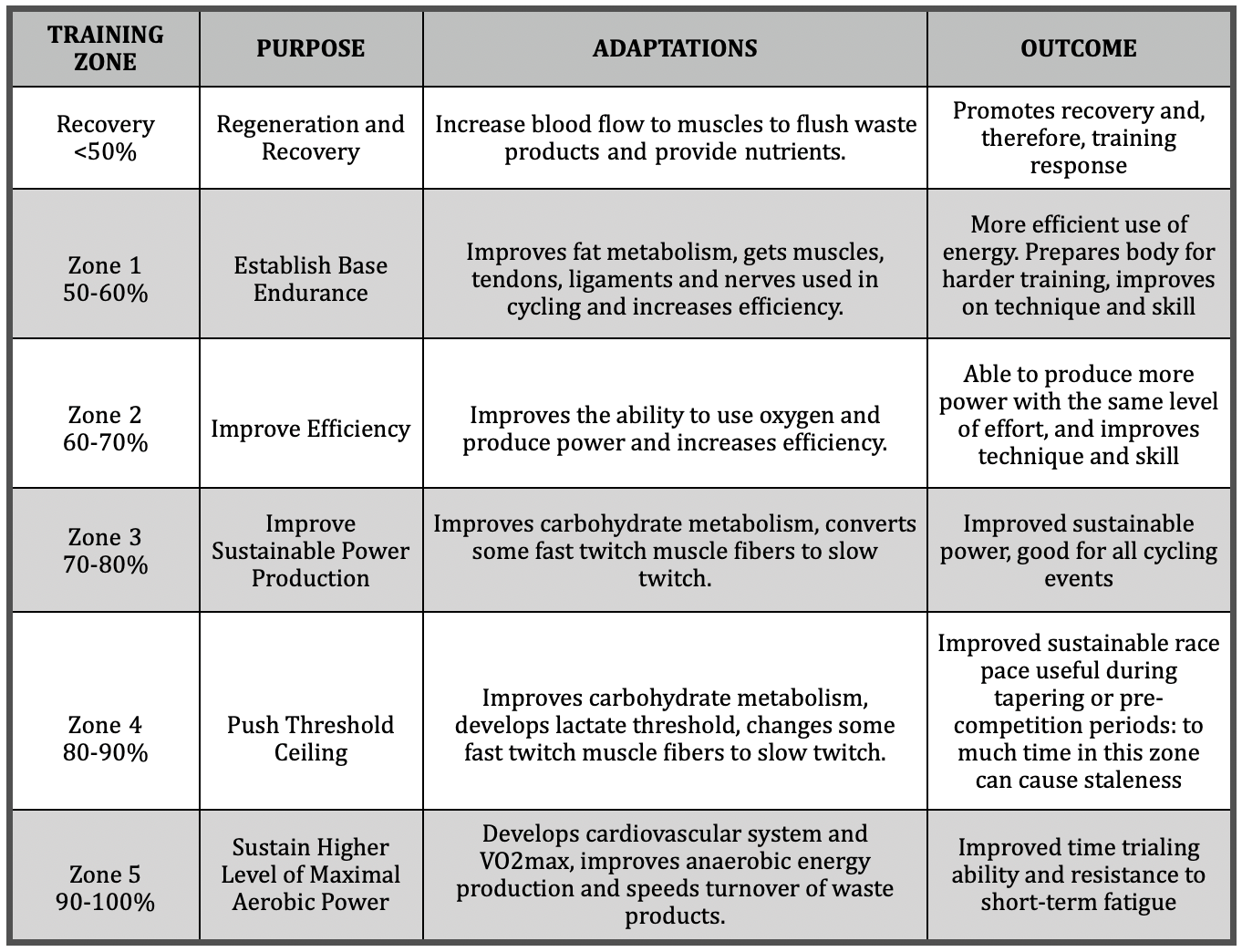HEART RATE
Part Two: The Basics of Training with Heart Rate
Part Two: The Basics of Training with Heart Rate
Training with heart rate is an accessible, affordable and generally easy-to-use method for measuring your progression, even if you aren’t a racer. Use of this metric throughout your training sessions can provoke specific physical adaptations.
The basics of heart rate training build nicely on last week’s discussion, “The Importance of Indoor Training and Mental Toughness.” Because no training plan is complete without the use of a heart monitor and an approach to training within heart rate zones.
The advantages of using a heart monitor:
Heart rate training can be a vital tool for every cyclist. It can help you get stronger, faster and fitter, all while preventing overtraining and burnout. But that’s only if you know what to look for, how to find it and how to track it.
But before you start tracking your heart rate, it’s important to understand what exactly goes into this type of training.
First, a primer: heart rate, or pulse, is the number of times your heart beats per minute. It is your body’s response to the work you’re doing. The harder you ride, the higher your heart rate.
Two of the most important numbers in heart rate training:
How to Measure Maximum Heart Rate
There are a variety of formulas and tests you can perform to measure your maximum heart rate. Just for simplicity, to calculate maximum heart rate by subtracting your age from 220. For example, my age is 51 years old, subtract 51 from 220 to get a maximum heart rate of 169. Yes, it is not as accurate as other tests, but it will give you an idea of where to begin.
How to Measure Resting Heart Rate
To measure resting heart rate, place your index and middle finger on your wrist just below the thumb, or along either side of your neck. Use a watch to count the number of beats for 30 seconds and double that total to find your beats per minute. Or, if you have a smartphone, any app that measures heart rate will do.
A normal resting heart rate for most adults ranges from 60 to 100 beats per minute. Generally, a lower heart rate at rest implies more efficient heart function and better cardiovascular fitness. For example, a well-trained athlete might have a normal resting heart rate closer to 40 beats per minute. Incredible!
There have been times during peak performance training when I have seen my resting heart rate as low as 36 beats per minute.
Resting heart rates vary for everyone, including athletes. Some factors that could influence it include:
Zone 1: This is the very low intensity zone, where training doesn’t add fatigue. Instead, promotes recovery and promotes training response.
Zone 2: Training in this zone to improve overall endurance, speed and slow twitch fibers. Extended training in this zone teaches the body to utilize fat better and builds a leaner body. We all like the sound of that!
Zone 3: More muscle fibers are engaged, making moderate efforts feel easier and more manageable.
Zone 4: This is where the going gets tough, and the tough get going. You will be breathing hard and working aerobically. This training will improve speed endurance.
Zone 5: This is your maximal effort to increase endurance and stamina and improve speed and power. And you crush those calories!
Training Zones Based on MHR (maximum heart rate)

“Dreams without goals are just dreams and fuel disappointment. Goals on the road to achievement cannot be achieved without discipline and consistency”.
